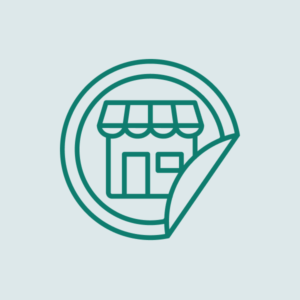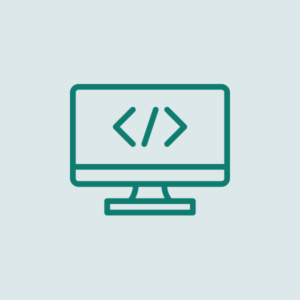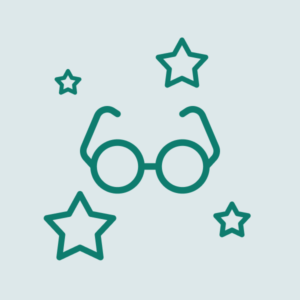Hi and welcome
Take a look around. You’ll notice that my UX work spans a variety of industries, from big retail e-commerces (BestBuy, Target), banking, health insurance products (UnitedHealthcare, Optum), non-medical, and medical device manufacturers (Honeywell, Medtronic).
I’m versed in responsive web, native mobile (iOS & Android), and fixed screen design.
If helpful, here’s my résumé.
How fizzy tablets changed my career path
In college, I was majoring in Fashion Merchandising when I observed my new friend, Dena, doing a project for her experiential design class. She was gluing Alka-Seltzer tablets to the bottom of a pan to form the word “Fizz”. For her project presentation, she would pour water in the pan and the word “Fizz” would fizzzz.
I switched my major that quarter!
My UX Lens
This is a set of UX considerations that I tend to rifle through as I evaluate a design solution. When I use these, solutions feel more usability-focused and less about subjective decisions.

NNG Heuristics Enthusiast
- I value and put into practice Jakob Nielsen’s 10 general principles for interaction design.
- My goal with any type of design solution is to make the visual translation and cognition as immediate as possible and not break from ubiquitous patterns.
- For content messaging, I’m looking to promote a user’s natural way of speaking and like to avoid internal jargon, to reduce friction in their experiences.

Thought Leader Follower
- When sorting out design solutions or best practices, I’ll research online discussions, and recommendations from thought leaders in our industry.
- My favorite resources are Nielsen Norman Group, Material, iOS, UX Movement, Medium, Smashing Magazine, Figma community, and other subject matter experts (SMEs).

User Feedback Preferred
- While I’m fairly confident I can craft solid design solutions 99% of the time, I will always prefer to gain end user feedback.
- I welcome all findings, even when I’m wrong, to shape what will work best.
- I have used UserTesting.com and found it to be a great and affordable option, when time and budgets are tight.

Innovation Moments
- I’m energized by complex user experience challenges, however, if there is a user mental model to be found, I’ll aim for familiarity first. That being said, my recent work efforts have generated XX design patents.
- With any type of innovative UI element, pattern or user flow, I’d like to ensure it is intuitive or the effort to learn something is worth it per user feedback.

Collaboration
- I like to find ways to simplify internal workflows and handoffs. I see my coworkers as my end users, as well. I seek their input on how to best work together, and learn what works best for their needs.
- I tend to reach out for input and discussion around project solutions. I like to hear from others to gain understanding, debate options, and align.
- I’m a fan of an iterative design process and progress over perfection, assuming there is time and budget built-in for improvement to be scoped and planned for.

Brand Advocacy
- My design foundation is steeped in brand development, governance and advocacy. I’m aware of tone in visual representation, motion and content messaging and how it may, or may not, be in alignment with brand tenets.
- I’ve had experience with, and have been successful at, collaborating with brand leadership to meet their core needs while negotiating acceptable adjustments in (sometimes print-based) design guidelines, to ensure product performance or usability.

Software Teamwork
- I seek consultation early and often with the teams that build the products from the designs I create. I understand they have unique constraints and capabilities that need to be factored in prior to committing final designs and behaviors.
- When designing, I consider content structure and arrangements and the potential impact on code structure (columns, rows, math, responsiveness). I aim to simplify the layout structure and logic for the build so that the design-to-code divergence is minimal.
- If I have a specific behavior or animation (easing, timing, etc.), I’ll use Figma prototyping to demonstrate that or will find real coded examples (even if in a different coding language) to provide as much detail as possible to improve the design-to-code translation.

Accessibility Minded
- I work to make sure all non-decorative content is accessible, even if the status of something is disabled. I would rather users, especially ones providing patient care, to know what they may have access to under different circumstances. Disabled visual affordances can be achieved and still pass WCAG Level AA (or APCA).
- Color alone, to communicate a status or content attribute, is something I avoid. I prefer to always have redundant and accessible visual affordance so that everyone has the same information, regardless of users’ low light environments or ability to differentiate between colors.
- Reading order and tab structure markup for development handoff for keyboard navigation is another win for inclusivity.

Visual Affordance Budget
- I’m aware of how to budget and prioritize visual affordances to avoid overuse (for decoration or theming), and diluting their meaning.
- I’m well-versed in design system components and pattern standards, proper use and how to align with users’ mental models and expectations for interfaces.
- I am watchful of trends in mobile, social media, e-commerce, streaming platforms and other digital communications for where heavily trafficked interface designs are going.

